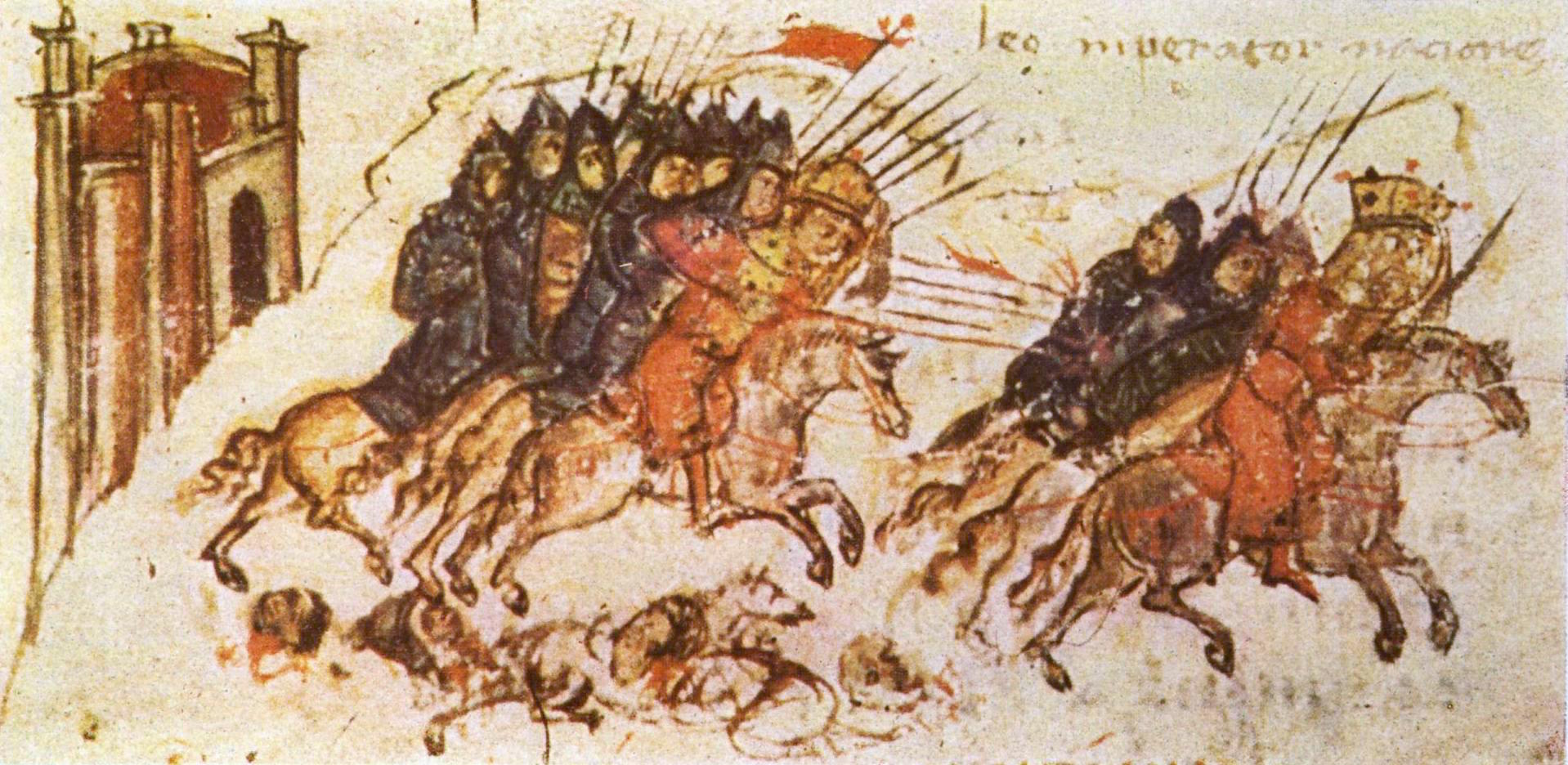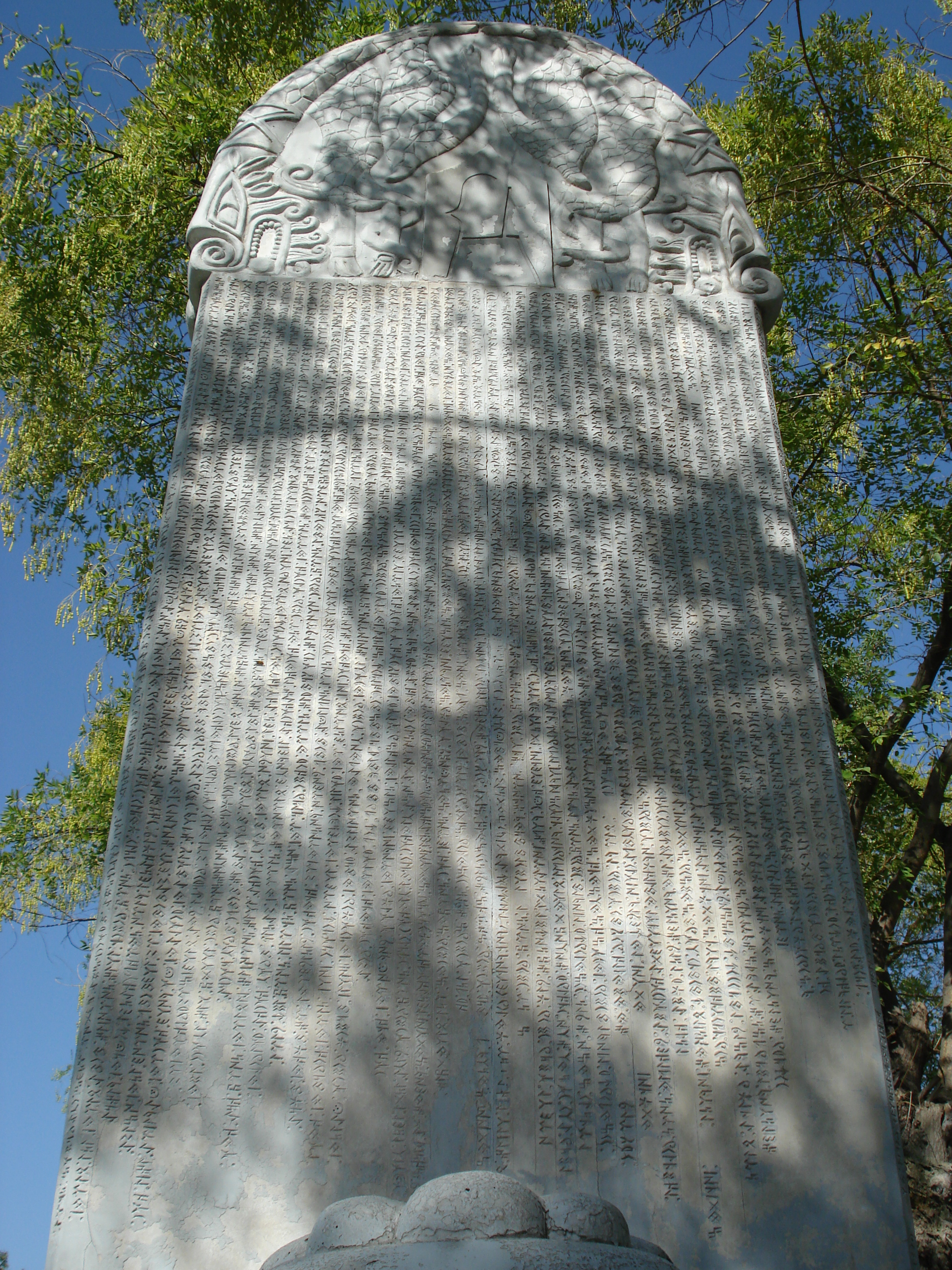|
Bulgarism
Bulgarism is an ideology aimed at the "revival of Bulgars' national identity" and Volga Bulgaria statehood. It originated in the second half of 19th century within the Wäisi movement and the Society for the study of the native land (Chuvashia) It was revived at the end of the 20th century as "neobulgarism" in Tatarstan and Chuvashia. The ideology is based on the theory that Volga Tatars and Chuvashs descend from Volga Bulgars. The theory was supported by the Soviet authorities in mid-20th century as an alternative to the "reactionary" theory claiming the Golden Horde descent.Azade-Ayse Rorlich, "The Volga Tatars: A Profile in National Resilience", 1986, , Chapter 1: "The Origins of Volga Tatars", p. 6Victor Schnirelmann, "Who gets the past?: competition for ancestors among non-Russian intellectuals in Russia", Woodrow Wilson Center Press, 1996, , , Chapter 4: "The Rivalry for the Bulgar Legacy" At the turn of 20th and 21st centuries, the ideas of bulgarism had been revived thro ... [...More Info...] [...Related Items...] OR: [Wikipedia] [Google] [Baidu] |
Volga Tatars
The Volga Tatars or simply Tatars ( tt-Cyrl, татарлар, tatarlar) are a Turkic ethnic group native to the Volga-Ural region of Russia. They are subdivided into various subgroups. Volga Tatars are Russia's second-largest ethnicity after the Russians. They compose 53% of the population of Tatarstan and 25% of the population of Bashkortostan. The Volga Tatars are by far the largest group amongst the Tatars. History Tatars inhabiting the Republic of Tatarstan, a federal subject of Russia, constitute one third of all Tatars, while the other two thirds reside outside Tatarstan. Some of the communities residing outside Tatarstan developed before the Russian Revolution of 1917, as Tatars were specialized in trading. During the 14th century, Sunni Islam was adopted by many of the Tatars. Tatars became subjects of Russia after the Siege of Kazan in 1552. Russians were using the Tatar ethnonym during the 18th and 19th centuries to denote all Turkic inhabitants of the Russian Emp ... [...More Info...] [...Related Items...] OR: [Wikipedia] [Google] [Baidu] |
Bulgars
The Bulgars (also Bulghars, Bulgari, Bolgars, Bolghars, Bolgari, Proto-Bulgarians) were Turkic semi-nomadic warrior tribes that flourished in the Pontic–Caspian steppe and the Volga region during the 7th century. They became known as nomadic equestrians in the Volga-Ural region, but some researchers say that their ethnic roots can be traced to Central Asia. During their westward migration across the Eurasian steppe, the Bulgar tribes absorbed other tribal groups and cultural influences in a process of ethnogenesis, including Iranian, Finnic and Hunnic tribes. Modern genetic research on Central Asian Turkic people and ethnic groups related to the Bulgars points to an affiliation with Western Eurasian populations. The Bulgars spoke a Turkic language, i.e. Bulgar language of Oghuric branch. They preserved the military titles, organization and customs of Eurasian steppes, as well as pagan shamanism and belief in the sky deity Tangra. The Bulgars became semi-sedentary du ... [...More Info...] [...Related Items...] OR: [Wikipedia] [Google] [Baidu] |
Kazan
Kazan ( ; rus, Казань, p=kɐˈzanʲ; tt-Cyrl, Казан, ''Qazan'', IPA: ɑzan is the capital and largest city of the Republic of Tatarstan in Russia. The city lies at the confluence of the Volga and the Kazanka rivers, covering an area of , with a population of over 1.2 million residents, up to roughly 1.6 million residents in the urban agglomeration. Kazan is the fifth-largest city in Russia, and the most populous city on the Volga, as well as the Volga Federal District. Kazan became the capital of the Khanate of Kazan and was conquered by Ivan the Terrible in the 16th century, becoming a part of Russia. The city was seized and largely destroyed during Pugachev's Rebellion of 1773–1775, but was later rebuilt during the reign of Catherine the Great. In the following centuries, Kazan grew to become a major industrial, cultural and religious centre of Russia. In 1920, after the Russian SFSR became a part of the Soviet Union, Kazan became the capital of the ... [...More Info...] [...Related Items...] OR: [Wikipedia] [Google] [Baidu] |
Tatar Topics
The Tatars ()Tatar in the Collins English Dictionary is an umbrella term for different ethnic groups bearing the name "Tatar". Initially, the ethnonym ''Tatar'' possibly referred to the Tatar confederation
Middle Mongol:
, conventional_long_name = TatarNine Tatars
, common_name = Tatar
,
, era = High Middle Ages
, status = Nomadic confederation
, empire = Turkic Khaganate
, status_text =
, today = MongoliaChi ... . That confederation was eventuall ...
[...More Info...] [...Related Items...] OR: [Wikipedia] [Google] [Baidu] |
Volga Bulgaria
Volga Bulgaria or Volga–Kama Bulgaria, was a historic Bulgar state that existed between the 7th and 13th centuries around the confluence of the Volga and Kama River, in what is now European Russia. Volga Bulgaria was a multi-ethnic state with large numbers of Turkic Bulgars, a variety of Finnic and Ugric peoples, and many East Slavs. Its strategic position of allowed it to create a monopoly between the trade of Arabs, Norse and Avars. History Origin and creation of the state The Bulgars were Turkic tribes of Oghuric origin, who settled north of the Black Sea. During their westward migration across the Eurasian steppe, they came under the overlordship of the Khazars, leading other ethnic groups, including Finnic and Iranic peoples. In about 630 they founded Old Great Bulgaria, which was destroyed by the Khazars in 668. Kubrat's son and appointed heir, Batbayan Bezmer, moved from the Azov region in about AD 665, commanded by the Kazarig Khagan Kotrag, to whom he ... [...More Info...] [...Related Items...] OR: [Wikipedia] [Google] [Baidu] |
Wäisi Movement
The Wäisi movement was a religious, social and political movement in Tatarstan and other Tatar-populated parts of Russia which took place in the late 19th and early 20th centuries. It also incorporated elements of class struggle and nationalism. The primary founder of the movement was Bahawetdin Wäisev. It was related to other movements among Muslims in the Russian Empire and the Soviet Union, such as the Jadid, Jadid movements. This movement enjoyed widespread popularity and united Tatar farmers, craftsmen and petit bourgeoisie, petty bourgeoisie. After the arrest of Bahawetdin Wäisev in 1884, the number of members remained high. In 1908, there were nearly 15,000 followers in the Kazan Governorate (especially Kazan, Sviyajsk, Arsk uyezds), Orenburg, and other guberniyas, in Central Asia. The main doctrines of Wäisi were disobedience to civil laws and administration, adherence to the Sharia and Qur'an rather than government regulations, evasion of service in the "kafir" army a ... [...More Info...] [...Related Items...] OR: [Wikipedia] [Google] [Baidu] |
Society For The Study Of The Native Land (Chuvashia)
Society for the study of the native land (; {{Lang-ru, Общество изучения местного края, ОИМК, Obshchestvo izucheniya mestnogo kraya, OYMK) is an association of ethnographers of Chuvashia to study the local region. The Company distributes scientific data on native land, introduces the population of the republic with the life and culture of the peoples of the country. Structure and composition In the society functioned sections: natural-historical, historical, archaeological, ethnographic, socio-political, artistic and literature, scientific and educational, organizational and instructors, information, since 1925 – a constitutional section. In the first year in the community was 51 members., In 1924 – 90, in 1926 – 155, including academicians, professors, researchers – 27 secondary school teachers – 24, agronomists – 16, doctors – 6, writers – 6 artists – 6 students – 27, and the rest – civil servants. In the Company's assets ... [...More Info...] [...Related Items...] OR: [Wikipedia] [Google] [Baidu] |
Tatarstan
The Republic of Tatarstan (russian: Республика Татарстан, Respublika Tatarstan, p=rʲɪsˈpublʲɪkə tətɐrˈstan; tt-Cyrl, Татарстан Республикасы), or simply Tatarstan (russian: Татарстан, tt-Cyrl, Татарстан), sometimes also called Tataria (russian: Татария, tt-Cyrl, Татария), is a republic of Russia located in Eastern Europe. It is a part of the Volga Federal District; and its capital and largest city is Kazan, an important cultural centre in Russia. The republic borders Kirov, Ulyanovsk, Samara, and Orenburg Oblasts, the Mari El, Udmurt, and Chuvash Republics, and the Republic of Bashkortostan. The area of the republic is . The unofficial Tatarstan motto is ''Bez Buildırabız!'' (''We can!''). As of the 2021 Census, the population of Tatarstan was 4,004,809. The state has strong cultural, linguistic, and ethnic ties with its eastern neighbour, the Republic of Bashkortostan. The sta ... [...More Info...] [...Related Items...] OR: [Wikipedia] [Google] [Baidu] |
Chuvashia
Chuvashia (russian: Чувашия; cv, Чӑваш Ен), officially the Chuvash Republic — Chuvasia,; cv, Чӑваш Республики — Чӑваш Ен is a republic of Russia located in Eastern Europe. It is the homeland of the Chuvash people, a Turkic ethnic group. Its capital is the city of Cheboksary. As of the 2010 Census, its population was 1,251,619. Geography The Chuvash Republic is located in the center of European Russia, in the heart of the Volga-Vyatka economic region, mostly to the west of the Volga River, in the Volga Upland. It borders with the Mari El Republic in the north, Nizhny Novgorod Oblast in the west, the Republic of Mordovia in the southwest, Ulyanovsk Oblast in the south, and the Republic of Tatarstan in the east and southeast. There are over two thousand rivers in the republic—with the major ones being the Volga, the Sura, and the Tsivil—as well as four hundred lakes. Some of the Volga River valley reservoirs are in th ... [...More Info...] [...Related Items...] OR: [Wikipedia] [Google] [Baidu] |
Chuvashs
The Chuvash people ( , ; cv, чӑваш ; russian: чуваши ) are a Turkic ethnic group, a branch of Oghurs, native to an area stretching from the Volga-Ural region to Siberia. Most of them live in Chuvashia and the surrounding areas, although Chuvash communities may be found throughout the Russian Federation. They speak Chuvash, a unique Turkic language that diverged from other languages in the family more than a millennium ago. Etymology There is no universally accepted etymology of the word ''Chuvash'', but there are three main theories. The popular theory accepted by Chuvash people suggests that ''Chuvash'' is a Shaz-Turkic adaptation of Lir-Turkic ''Suvar'' (Sabir people), an ethnonym of people that are widely considered to be the ancestors of modern Chuvash people. Compare Lir-Turkic Chuvash: ''huran'' to Shaz-Turkic Tatar: ''qazan'' (‘cauldron’). One theory suggests that the word ''Chuvash'' may be derived from Common Turkic ''jăvaš'' ('friendly', 'peacefu ... [...More Info...] [...Related Items...] OR: [Wikipedia] [Google] [Baidu] |
Golden Horde
The Golden Horde, self-designated as Ulug Ulus, 'Great State' in Turkic, was originally a Mongol and later Turkicized khanate established in the 13th century and originating as the northwestern sector of the Mongol Empire. With the fragmentation of the Mongol Empire after 1259 it became a functionally separate khanate. It is also known as the Kipchak Khanate or as the Ulus of Jochi, and replaced the earlier less organized Cuman–Kipchak confederation. After the death of Batu Khan (the founder of the Golden Horde) in 1255, his dynasty flourished for a full century, until 1359, though the intrigues of Nogai instigated a partial civil war in the late 1290s. The Horde's military power peaked during the reign of Uzbeg Khan (1312–1341), who adopted Islam. The territory of the Golden Horde at its peak extended from Siberia and Central Asia to parts of Eastern Europe from the Urals to the Danube in the west, and from the Black Sea to the Caspian Sea in the south, while b ... [...More Info...] [...Related Items...] OR: [Wikipedia] [Google] [Baidu] |




.png)